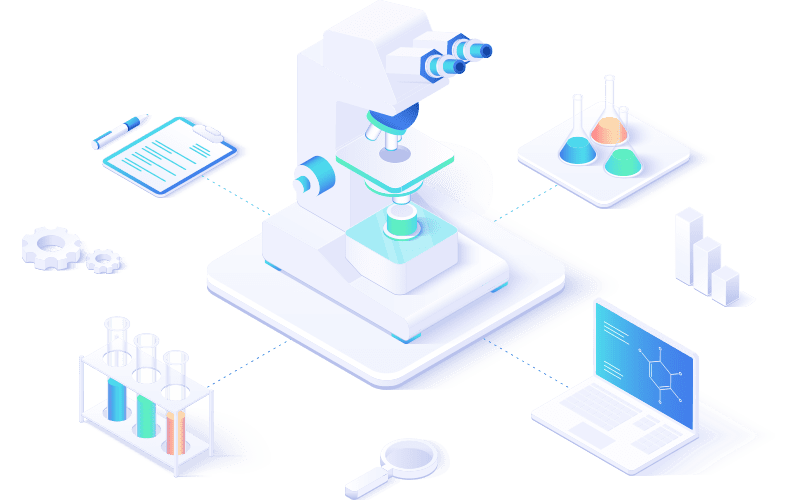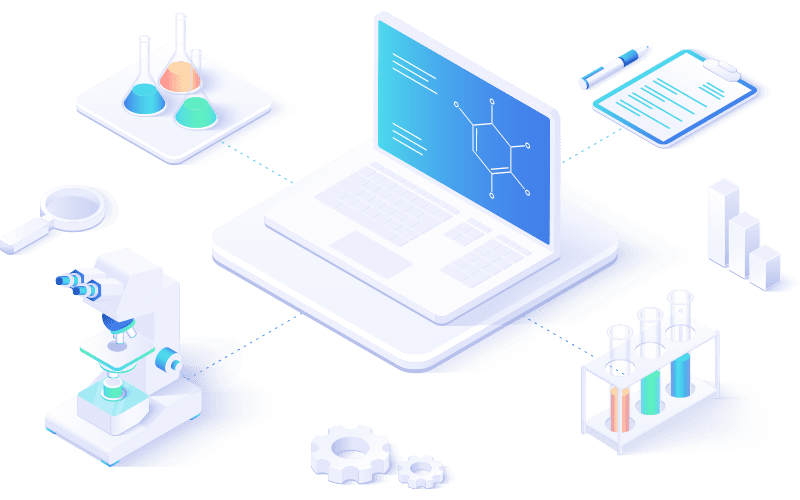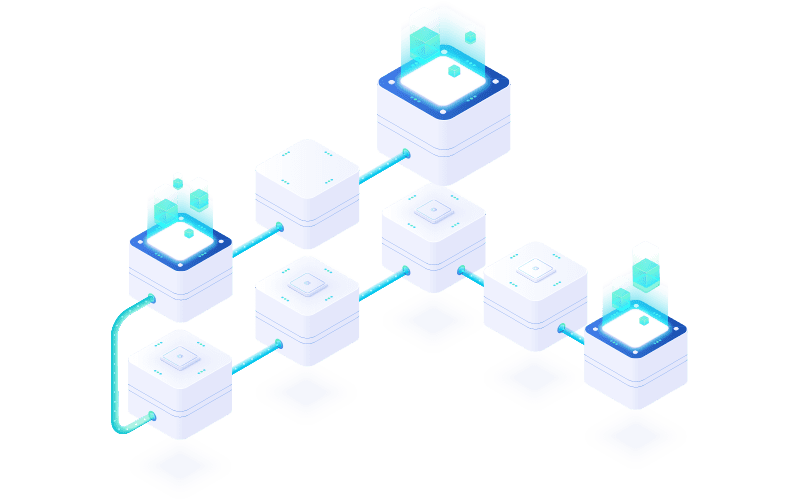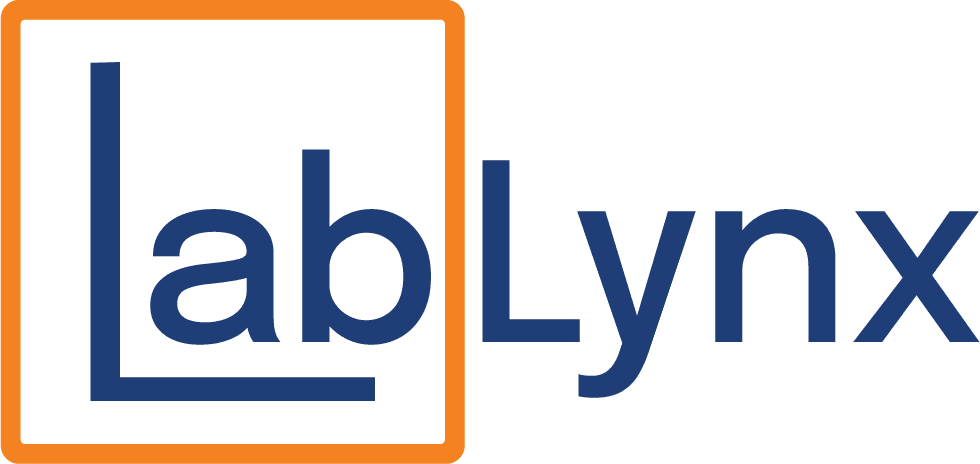
Picture your laboratory for a moment. The workflow, the instruments, the way data flows (or does not). Now ask yourself: does it feel like a lab of the future, or one stuck in the past? Many laboratories do not realize they are falling behind until competitors surge ahead, fueled by smarter tools and better management. The difference is not only scientific—it is financial, and the numbers prove it.
Warning Signs Your Lab May Be Stuck
It is not always obvious when a lab is falling behind. Day-to-day operations may feel “normal” until you look closer and realize the small inefficiencies are costing more than you think. Here are some familiar scenarios, and what the advanced alternative looks like.
Piles of Paper vs. Seamless Digital Records
You glance around the lab and see shelves crowded with binders, stacks of handwritten logbooks, and sticky notes pinned to equipment. Samples sit on benches with scribbled labels, and tracking down one result means flipping through a dozen pages. Each step depends on someone remembering where things were recorded last. Errors creep in quietly, and audits feel like scavenger hunts.
Now picture the advanced alternative: every sample logged automatically into a centralized system the moment it enters the lab. Instruments feed results directly into a secure database, where they are searchable in seconds. No paper to chase, no handwriting to decipher. Just clean, reliable data ready for analysis and reporting.
Scrambling to Meet Deadlines vs. Confident Turnaround
A client calls asking about a report that was due yesterday. The team scrambles, double-checking spreadsheets and re-running calculations, unsure if the latest version is the correct one. Stress builds, time is lost, and confidence in the lab takes a hit.
In an advanced lab, deadlines are not a scramble. They are built into automated workflows. Reports generate instantly with complete audit trails, flagged with QC checks before they ever reach a client. Turnaround times shrink, errors disappear, and the lab’s reputation strengthens with every on-time delivery.
Instrument Downtime vs. Predictable Performance
You walk past a key analyzer and notice the “out of service” tag again. Repairs always seem to happen at the worst possible time, throwing schedules off and forcing expensive reruns. Maintenance records are buried in emails or notebooks, and downtime feels unavoidable.
In an advanced lab, predictive maintenance keeps instruments running smoothly. Usage data is tracked in real time, alerts flag when service is due, and downtime is scheduled before problems strike. Instead of halting work, instruments deliver steady, reliable performance.
Audit Anxiety vs. Audit Readiness
The word “audit” sparks dread. Staff scramble to pull records, reassemble chains of custody, and justify results from months ago. What should be a demonstration of quality turns into weeks of stress and overtime.
By contrast, an advanced lab welcomes audits. Every step—sample intake, testing, reporting—is logged automatically. Records are immutable, time-stamped, and accessible at the click of a button. Instead of disruption, audits become opportunities to showcase transparency and build trust.
What Advanced Laboratories Are Doing Differently
Today’s high-performing laboratories look very different from those stuck in outdated workflows. Their success is not magic. It is built on systematic improvements that deliver measurable gains:
- Automating Workflows: Labs that automate sample logging and reporting save up to 40% in staff time, according to recent industry benchmarks.
- Data Integration: By connecting instruments directly to a centralized LIMS, advanced labs reduce transcription errors by more than 80%.
- Predictive Maintenance: Using analytics, labs cut unplanned downtime by 20–30%, keeping projects on schedule and revenue consistent.
- Compliance by Design: Audit-ready reports and automated trails reduce inspection preparation time by weeks and minimize the risk of costly penalties.
- Smarter Financial Performance: Studies show digitally mature labs achieve 15–20% higher profit margins due to faster turnaround and reduced rework.
The Business Impact of Falling Behind
In a competitive market, the difference between profit and loss often comes down to operational efficiency. A Deloitte survey on digital transformation in life sciences found that organizations investing in advanced lab technologies grow 36% faster on average. Meanwhile, labs clinging to outdated practices face mounting costs, slower growth, and shrinking client confidence.
Falling behind is not only about losing efficiency—it is about losing relevance. As clients and regulators expect faster, more transparent results, laboratories without advanced systems risk becoming obsolete.
Lab Management Solutions: The Hidden Growth Engine
Behind every advanced, profitable laboratory is a strong lab management solution. A modern Laboratory Information Management System (LIMS) transforms operations from fragmented and reactive into unified and proactive. With capabilities like automated sample tracking, real-time dashboards, compliance-ready reporting, and scalable workflows, a LIMS empowers labs to not only keep pace but pull ahead.
The result? Labs save time, reduce costs, boost accuracy, and unlock higher profits, while positioning themselves as leaders in their field.
Conclusion: Tomorrow’s Growth Belongs to Advanced Labs
The labs driving rapid growth today are not simply lucky—they are intentional. They have embraced automation, integrated their data, and built efficiency into every process. The question is not whether your lab can keep up, it is whether you are ready to lead. By investing in the right lab management solutions now, you can ensure that your laboratory is not only part of the future of science, but also thriving in the business of science.
Accelerate Your Lab's Success & Experience LabLynx
"*" indicates required fields
Explore the LabLynx Suites

LIMS Suite
Seamless Sample and Workflow Management
The LabLynx LIMS Suite empowers laboratories with the tools needed to manage samples, workflows, compliance, and more in one centralized system. It’s the backbone for labs seeking efficient, reliable, and scalable management solutions.

ELN Suite
The LabLynx ELN Suite offers a modern approach to managing lab data and experiments. With its secure, intuitive platform, your team can record, store, and collaborate effortlessly, supporting innovation every step of the way.

Lab Automation
Automate for Efficiency and Growth
Streamline operations and boost productivity with the LabLynx Lab Automation Suite. Designed for labs ready to embrace advanced automation, this suite integrates systems, instruments, and workflows to deliver efficiency at scale.

